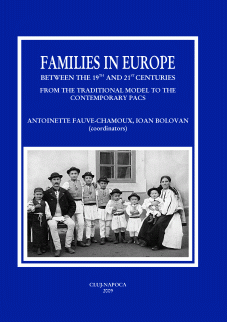Marriage and Family at the Beginning of the 20th Century
Orthodox Landmarks
Marriage and Family at the Beginning of the 20th Century
Orthodox Landmarks
Author(s): Valeria SoroştineanuSubject(s): History
Published by: Centrul de Studiere a Populaţiei
Keywords: marriage; family; Orthodox church; Romanian village; Transylvania
Summary/Abstract: Among the rites of the church, marriage not only kept its importance, but has undergone a direct intervention from the state, at the end of the 19th Century. Until then, in traditional societies, the church had delivered all that was expected from it. With the 18th and especially the 19th Century, marriage begins to be situated among “the requirements of the church and of the modern state”. Within the Habsburg Empire, the state of Franz Joseph had manifested, through its laws, the intention to regulate, from a secular point of view, the marriage; the church, however, maintained its superiority in “regulating the matrimonial affairs, but under the control of the modern state”, an idea with which towards the end of her reign the empress Maria Teresia, for whom the model of catholic piety had to surpass her own example, had become used to. The following periods from the evolution of the empire, were, from the point of view of the approached subject, areas in which Wien tries to assure through the hierarchies of the Transylvanian Romanians’ two confessions, an acceptance of both the help which could be given, compared to the local privileged nations and of the support of an official discourse, not only at the level of the Romanian elite, which was still weak at the end of the 18th Century and the first half of the following one. “The rural community is a mostly collective one” and celibacy was almost impossible, with all these, the necessity for an individualization is felt by the individual, including in the rural area, but this only occurs within it, experiencing “a change of attitude, a reinterpretation of the mentality”. We cannot easily overlook “the forced intervention of society” within the same mentioned frame, or of the family itself, as an institution, over its members, making a general tendency towards equilibrium – when positive aspects were referred to – and towards equidistance – in the case of the negative aspects.
Journal: Romanian Journal of Population Studies
- Issue Year: 3/2009
- Issue No: Supplement
- Page Range: 475-488
- Page Count: 11
- Language: English
- Content File-PDF

